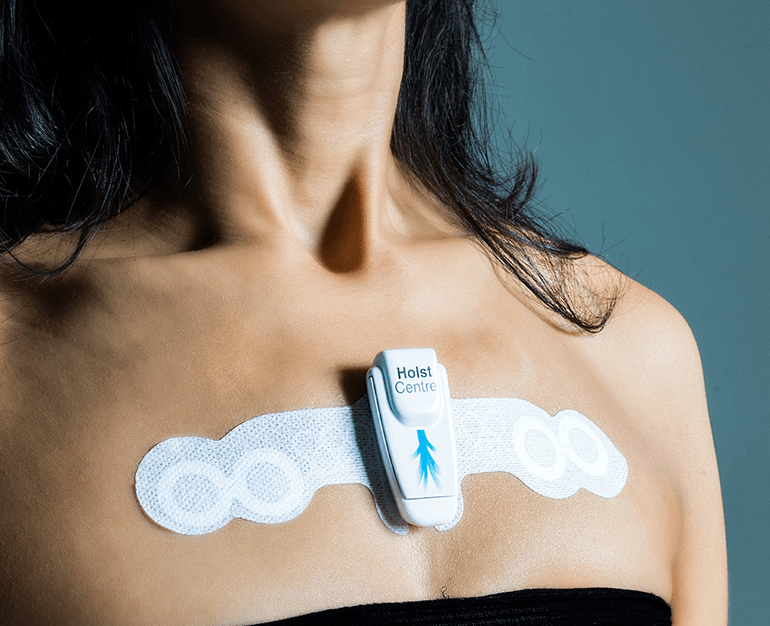
With a small, energy-efficient health patch, Holst Centre expects to lay the foundation for better mobile health solutions. The patch was presented earlier this month at a medtech fair in Munich and is ready for more pre-clinical research. The smart patch is comfortable to wear and has been optimized for low power consumption. It is the first of its kind to track physical and cardiac activity, while monitoring bioelectrical impedance, Holst says.
“Since our entry in this space, we’ve advanced far beyond proof-of-concept to a patch that has attained a high level of technical maturity,” says Ruben de Francisco, Program Manager Wearable Health at imec and Holst Centre. “The underlying technologies have been fully validated, and the patch itself has been tested within a controlled environment. Today, it is ready for preclinical and usability studies. Looking ahead, we plan to build on our expertise in the domain of data science to lay the foundation for a powerful patient management solution that not only captures data, but that also turns data into meaningful information upon which people and health providers can act.”
With more people living longer than ever before and chronic disease on the rise, traditional healthcare systems are being pushed to their limits. It is generally acknowledged that the concept of digital health, and specifically mobile health, can help address that issue by enabling individuals to better track and manage their health and receive personalized and optimized treatments while reducing medical inefficiencies and costs.
The health industry has recognized the challenges and solutions, with analysts predicting that the value of the global mobile health market is expected to more than triple in the next few years, from $19.2 billion in 2016 to $58.8 billion by 2020.
At the heart of the health patch is a chip that has been optimized for low power consumption. This chip is combined with a highly comfortable to wear electrode patch that can stay on the body for long periods of time, including when showering. It combines a variety of sensing capabilities – ranging from an accelerometer (to track a person’s physical activity) to ECG tracking (measuring the heart’s electrical activity) and bioelectrical impedance monitoring (measuring body composition, respiratory activity and the distribution of body fluids).
Watch the video to learn more:

